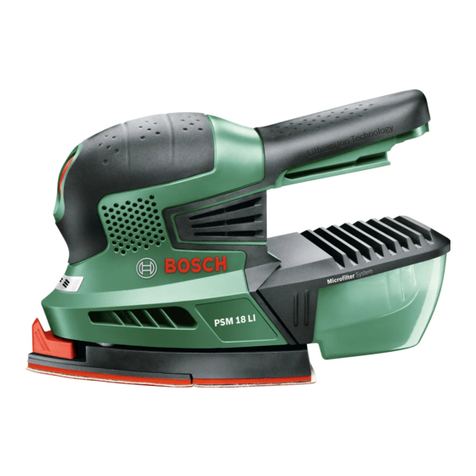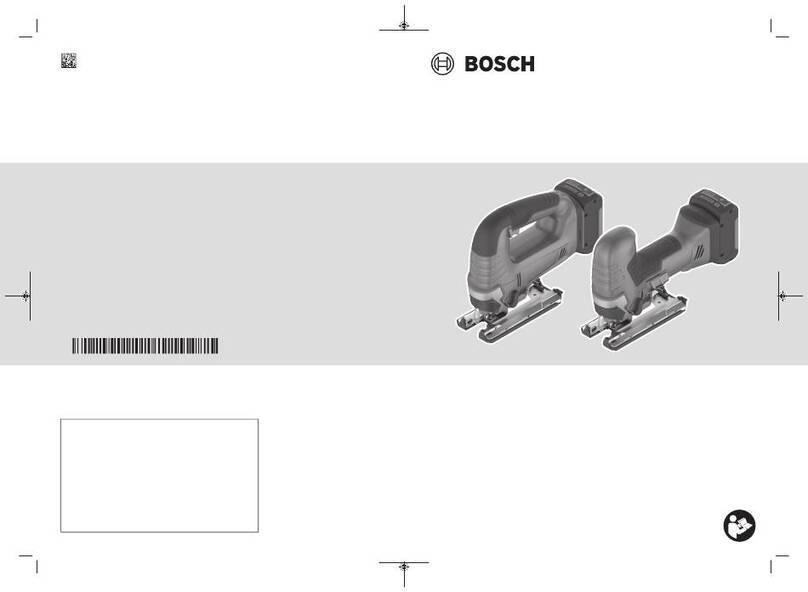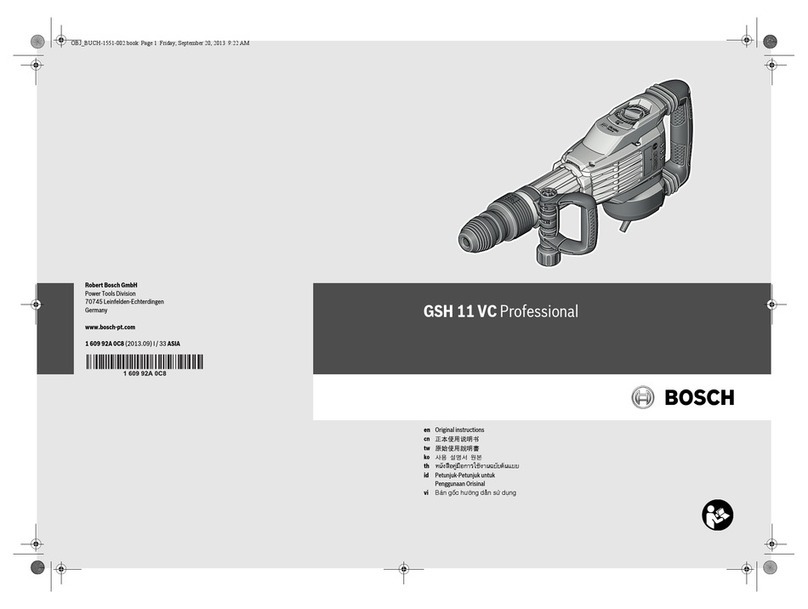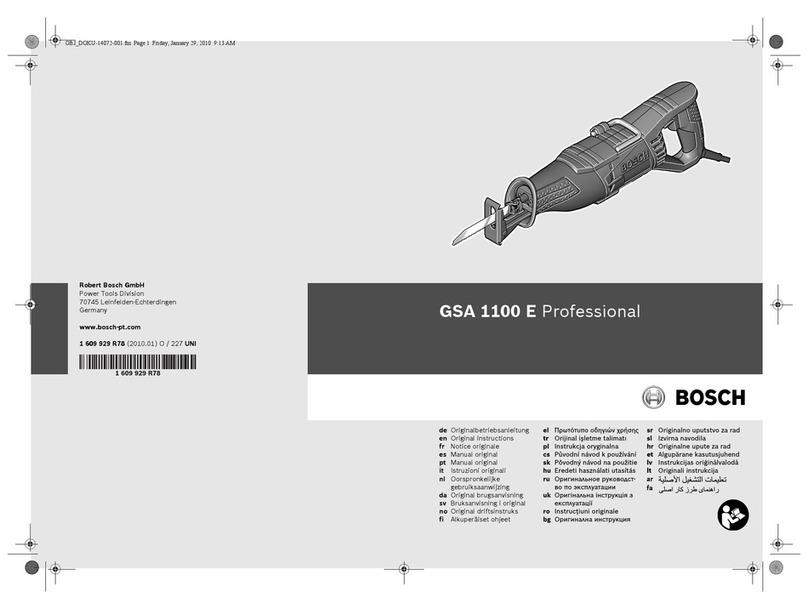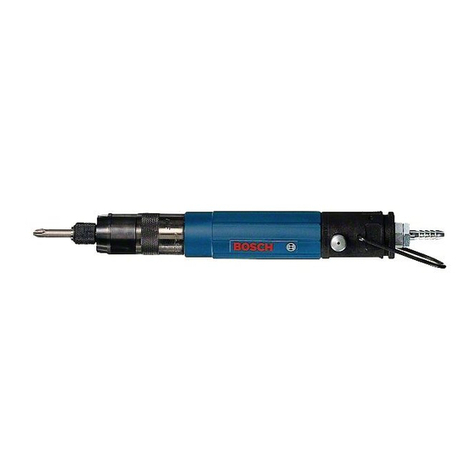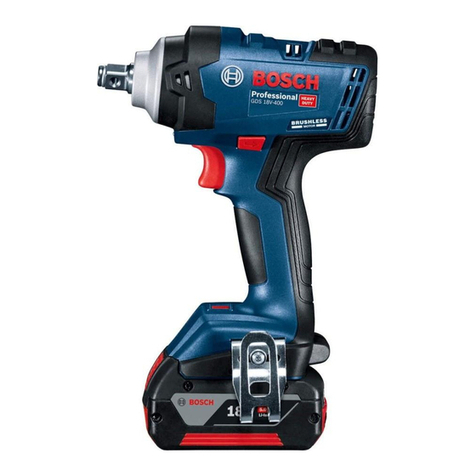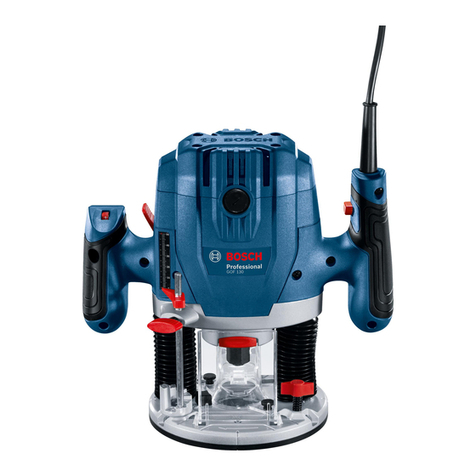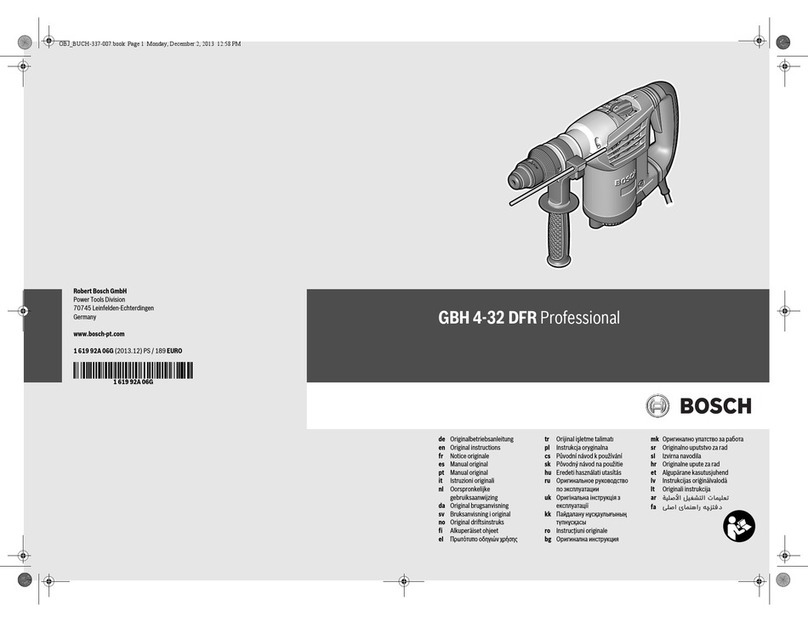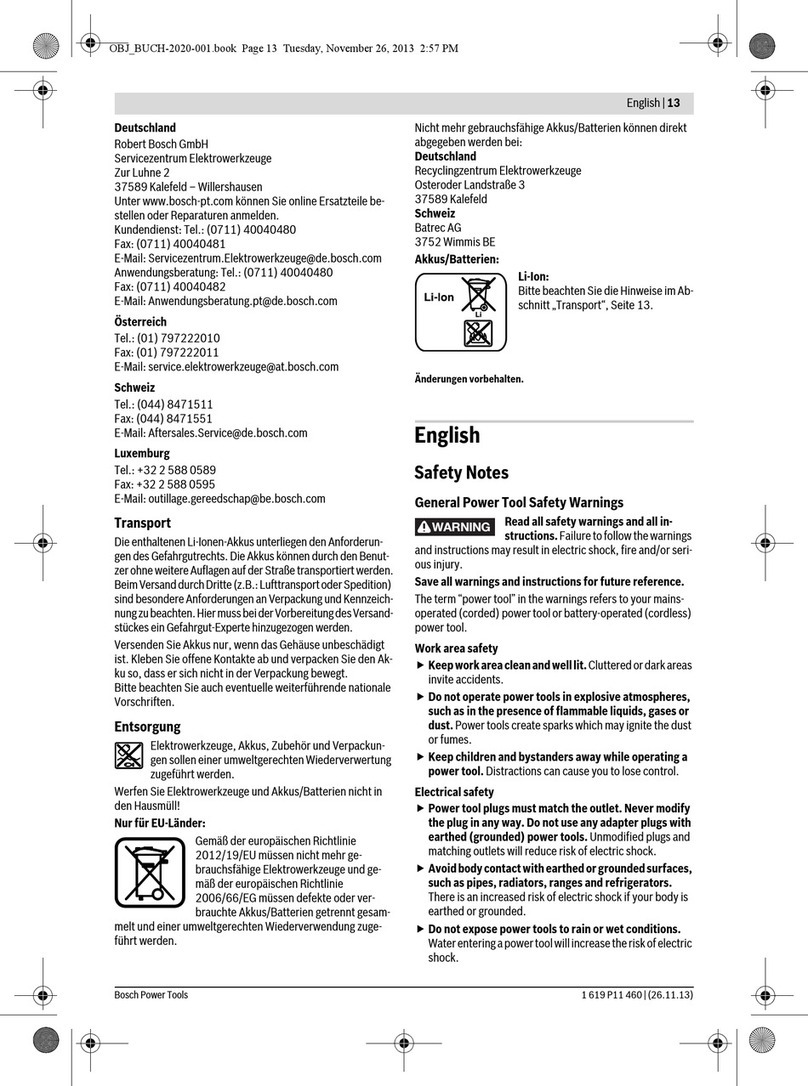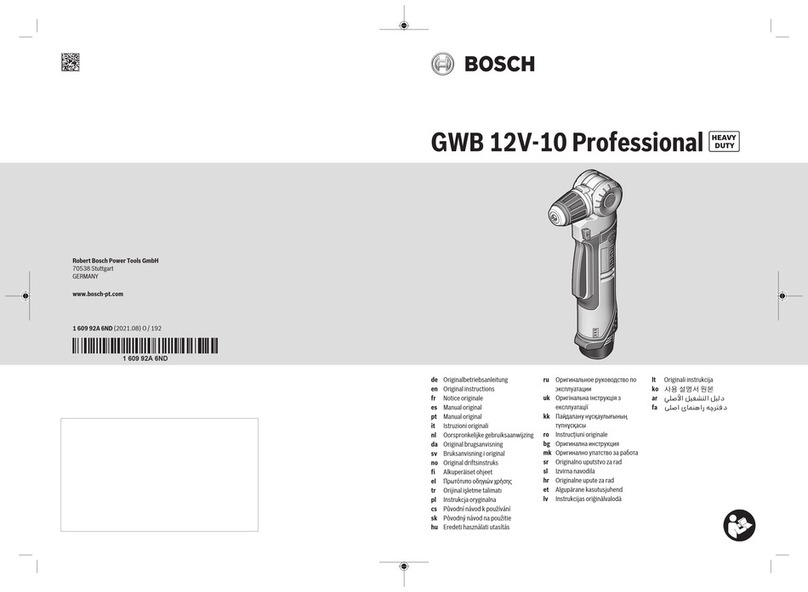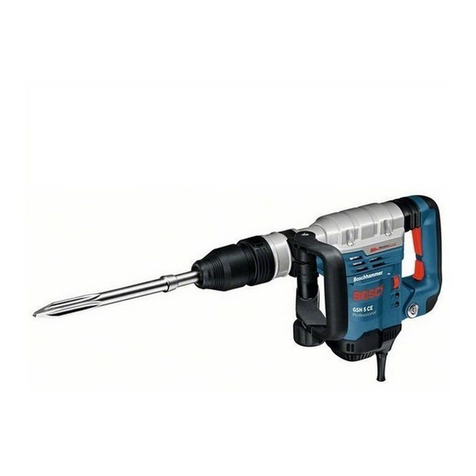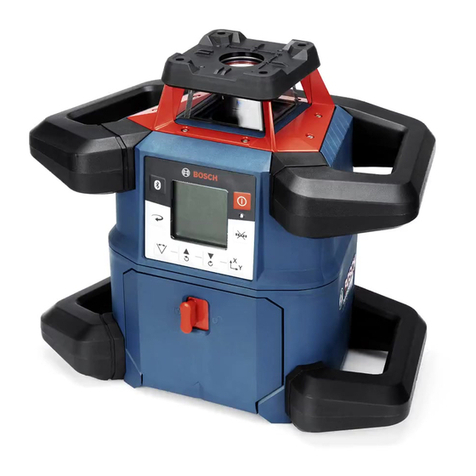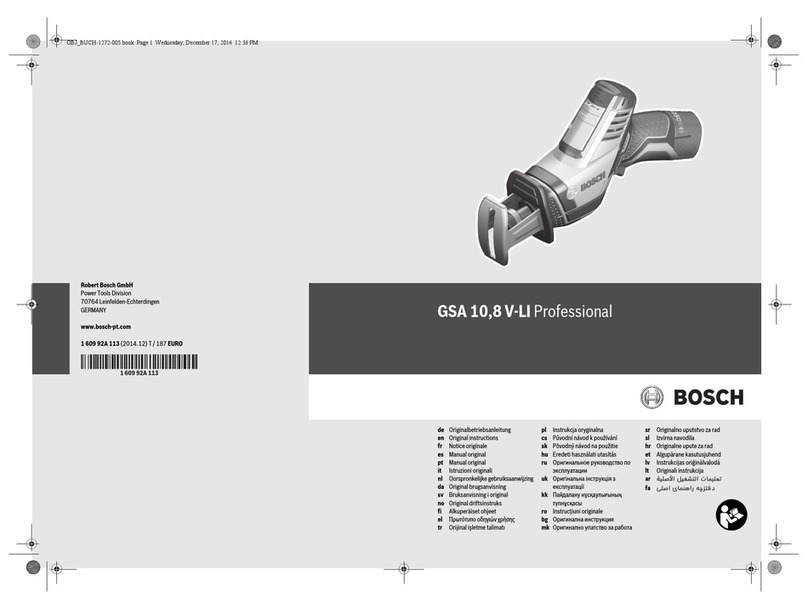
6 | DeutschDeutschSicherheitshinweiseAllgemeine Sicherheitshinweise fürElektrowerkzeugeWARNUNGLesen Sie alle Sicherheitshinwei-se, Anweisungen, Bebilderungenund technischen Daten, mit denen dieses Elektrowerk-zeug versehen ist. Versäumnisse bei der Einhaltung der Si-cherheitshinweise und nachfolgenden Anweisungen könnenelektrischen Schlag, Brand und/oder schwere Verletzungenverursachen.Bewahren Sie alle Sicherheitshinweise und Anweisungenfür die Zukunft auf.Der in den Sicherheitshinweisen verwendete Begriff„Elektrowerkzeug“ bezieht sich auf netzbetriebene Elektro-werkzeuge (mit Netzleitung) und auf akkubetriebene Elek-trowerkzeuge (ohne Netzleitung).ArbeitsplatzsicherheituHalten Sie Ihren Arbeitsbereich sauber und gut be-leuchtet. Unordnung oder unbeleuchtete Arbeitsberei-che können zu Unfällen führen.uArbeiten Sie mit dem Elektrowerkzeug nicht in explo-sionsgefährdeter Umgebung, in der sich brennbareFlüssigkeiten, Gase oder Stäube befinden. Elektro-werkzeuge erzeugen Funken, die den Staub oder dieDämpfe entzünden können.uHalten Sie Kinder und andere Personen während derBenutzung des Elektrowerkzeugs fern. Bei Ablenkungkönnen Sie die Kontrolle über das Elektrowerkzeug verlie-ren.Elektrische SicherheituDer Anschlussstecker des Elektrowerkzeuges muss indie Steckdose passen. Der Stecker darf in keiner Wei-se verändert werden. Verwenden Sie keine Adapter-stecker gemeinsam mit schutzgeerdeten Elektrowerk-zeugen. Unveränderte Stecker und passende Steckdo-sen verringern das Risiko eines elektrischen Schlages.uVermeiden Sie Körperkontakt mit geerdeten Oberflä-chen wie von Rohren, Heizungen, Herden und Kühl-schränken. Es besteht ein erhöhtes Risiko durch elektri-schen Schlag, wenn Ihr Körper geerdet ist.uHalten Sie Elektrowerkzeuge von Regen oder Nässefern. Das Eindringen von Wasser in ein Elektrowerkzeugerhöht das Risiko eines elektrischen Schlages.uZweckentfremden Sie die Anschlussleitung nicht, umdas Elektrowerkzeug zu tragen, aufzuhängen oder umden Stecker aus der Steckdose zu ziehen. Halten Siedie Anschlussleitung fern von Hitze, Öl, scharfen Kan-ten oder sich bewegenden Teilen. Beschädigte oderverwickelte Anschlussleitungen erhöhen das Risiko eineselektrischen Schlages.uWenn Sie mit einem Elektrowerkzeug im Freien arbei-ten, verwenden Sie nur Verlängerungskabel, die auchfür den Außenbereich geeignet sind. Die Anwendungeiner für den Außenbereich geeigneten Verlängerungslei-tung verringert das Risiko eines elektrischen Schlages.uWenn der Betrieb des Elektrowerkzeuges in feuchterUmgebung nicht vermeidbar ist, verwenden Sie einenFehlerstromschutzschalter. Der Einsatz eines Fehler-stromschutzschalters vermindert das Risiko eines elektri-schen Schlages.Sicherheit von PersonenuSeien Sie aufmerksam, achten Sie darauf, was Sie tun,und gehen Sie mit Vernunft an die Arbeit mit einemElektrowerkzeug. Benutzen Sie kein Elektrowerkzeug,wenn Sie müde sind oder unter dem Einfluss von Dro-gen, Alkohol oder Medikamenten stehen. Ein Momentder Unachtsamkeit beim Gebrauch des Elektrowerkzeu-ges kann zu ernsthaften Verletzungen führen.uTragen Sie persönliche Schutzausrüstung und immereine Schutzbrille. Das Tragen persönlicher Schutzaus-rüstung, wie Staubmaske, rutschfeste Sicherheitsschuhe,Schutzhelm oder Gehörschutz, je nach Art und Einsatzdes Elektrowerkzeuges, verringert das Risiko von Verlet-zungen.uVermeiden Sie eine unbeabsichtigte Inbetriebnahme.Vergewissern Sie sich, dass das Elektrowerkzeug aus-geschaltet ist, bevor Sie es an die Stromversorgungund/oder den Akku anschließen, es aufnehmen odertragen. Wenn Sie beim Tragen des Elektrowerkzeugesden Finger am Schalter haben oder das Gerät eingeschal-tet an die Stromversorgung anschließen, kann dies zu Un-fällen führen.uEntfernen Sie Einstellwerkzeuge oder Schrauben-schlüssel, bevor Sie das Elektrowerkzeug einschalten.Ein Werkzeug oder Schlüssel, der sich in einem drehen-den Geräteteil befindet, kann zu Verletzungen führen.uVermeiden Sie eine abnormale Körperhaltung. SorgenSie für einen sicheren Stand und halten Sie jederzeitdas Gleichgewicht. Dadurch können Sie das Elektro-werkzeug in unerwarteten Situationen besser kontrollie-ren.uTragen Sie geeignete Kleidung. Tragen Sie keine weiteKleidung oder Schmuck. Halten Sie Haare und Klei-dung fern von sich bewegenden Teilen. Lockere Klei-dung, Schmuck oder lange Haare können von sich bewe-genden Teilen erfasst werden.uWenn Staubabsaug- und -auffangeinrichtungen mon-tiert werden können, sind diese anzuschließen undrichtig zu verwenden. Verwendung einer Staubabsau-gung kann Gefährdungen durch Staub verringern.uWiegen Sie sich nicht in falscher Sicherheit und set-zen Sie sich nicht über die Sicherheitsregeln für Elek-trowerkzeuge hinweg, auch wenn Sie nach vielfachemGebrauch mit dem Elektrowerkzeug vertraut sind.Achtloses Handeln kann binnen Sekundenbruchteilen zuschweren Verletzungen führen.1 609 92A 7VS | (05.07.2022)Bosch Power Tools
